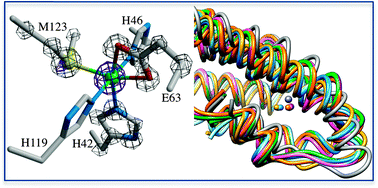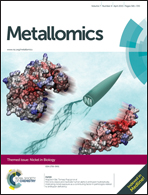Response of CnrX from Cupriavidus metallidurans CH34 to nickel binding
Abstract
Resistance to high concentration of nickel ions is mediated in Cupriavidus metallidurans by the CnrCBA transenvelope efflux complex. Expression of the cnrCBA genes is regulated by the transmembrane signal transduction complex CnrYXH. Together, the metal sensor CnrX and the transmembrane antisigma factor CnrY control the availability of the extracytoplasmic function sigma factor CnrH. Release of CnrH from sequestration by CnrY at the cytoplasmic side of the membrane depends essentially on the binding of the agonist metal ion Ni(II) to the periplasmic metal sensor domain of CnrX. CnrH availability leads to transcription initiation at the promoters cnrYp and cnrCp and to the expression of the genes in the cnrYXHCBA nickel resistance determinant. The first steps of signal propagation by CnrX rely on subtle metal-dependent allosteric modifications. To study the nickel-mediated triggering process by CnrX, we have altered selected residues, F66, M123, and Y135, and explored the physiological consequences of these changes with respect to metal resistance, expression of a cnrCBA-lacZ reporter fusion and protein production. M123C- and Y135F-CnrXs have been further characterized in vitro by metal affinity measurements and crystallographic structure analysis. Atomic-resolution structures of metal-bound M123C- and Y135F-CnrXs showed that Ni(II) binds two of the three canonical conformations identified and that Ni(II) sensing likely proceeds by conformation selection.

- This article is part of the themed collection: Nickel in biology

 Please wait while we load your content...
Please wait while we load your content...